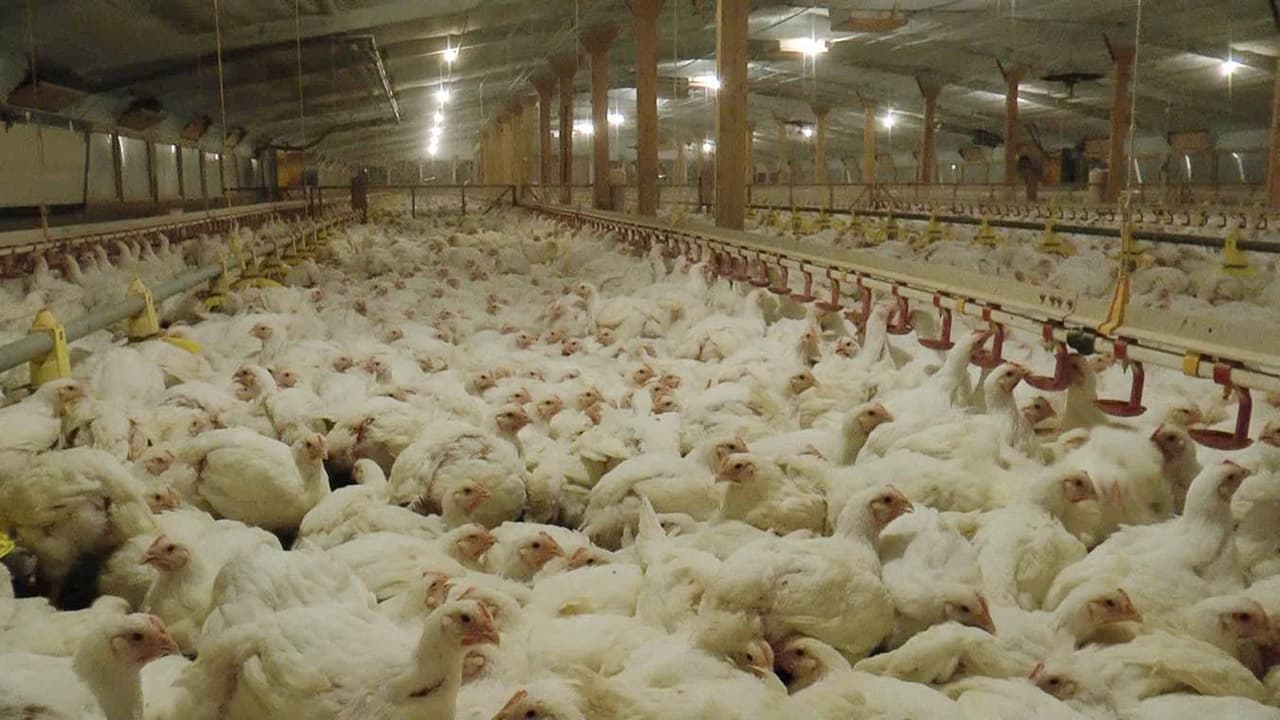
Critically important to human health: What are fluoroquinolones?
Factory chickens. Photo credit: Viva!
Fluoroquinolone antibiotics were developed in the 1970s and first used in human medicine in the 1980s. The drugs are used for treating, amongst other conditions, human food poisoning illnesses such as campylobacter, salmonella and Ecoli.
Because of their important role in treating severe cases of such infections, the World Health Organization (WHO) has classified fluoroquinolones as being “critically important” to human healthcare, and said that reducing the use of the substances on livestock farms should be prioritised.
This is because of growing global evidence that the overuse of the antibiotics on factory farms is fuelling the development of drug resistant forms of food poisoning bugs which can be passed to consumers via contaminated meat. Those who develop complications requiring medical treatment may not respond to antibiotics prescribed by doctors, potentially putting lives at risk.
One of the most commonly used fluoroquinolones in chicken production is enrofloxacin, which is closely related to ciprofloxacin, a fluoroquinolone used in human medicine. Enrofloxacin is used on poultry farms to tackle bacterial infections. The drug is typically administered in birds’ drinking water, meaning whole flocks are dosed with the drugs at one time.
Concerns over the links between fluoroquinolone use on farms and antibiotic resistant bacteria were raised as far back as 1998 when a House of Lords committee urged the poultry industry to reduce its use of fluoroquinolones.
Despite a temporary reduction in the use of the antibiotics following the calls, veterinary usage of the drugs has increased steadily in the years since. This has proved controversial, particularly as the use of the antibiotics in poultry production was outlawed in the US in 2005, and is banned in poultry farms in Australia, Finland and Denmark.
Although fluoroquinolones only account for a small proportion of the overall volume of antibiotics used in UK livestock farming each year – in terms of active ingredient, experts say the drugs are highly potent and weigh significantly less than other antibiotics commonly used. The European Medicines Agency has estimated that one dose of fluoroquinolones weighs 30 to 70 times less than one dose of tetracycline antibiotics.
Do you have a tip or story about antimicrobial resistance? Contact one of our reporters:
Andrew Wasley on [email protected] or
Victoria Parsons on [email protected]
Follow Victoria Parsons on Twitter. Read about the Drug resistance project here and join our mailing list here.


